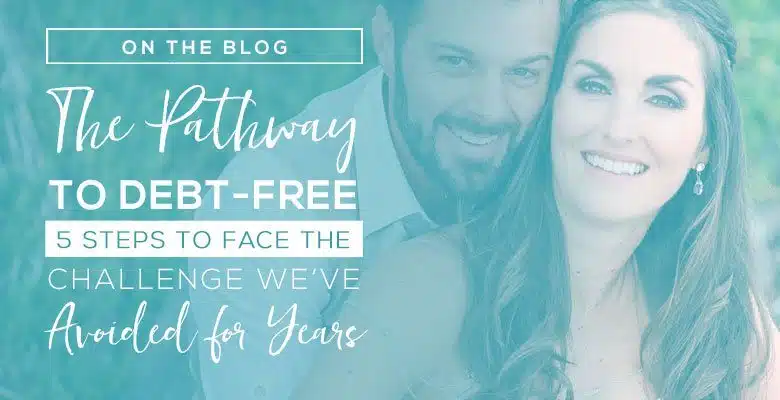According to data from the U.S. Census Bureau and the Federal Reserve, American households owe on average a staggering $16,425 in credit card debt, and that amount has risen 10% since 2013.
I’ve been carrying around debt since I left my corporate job in 2006 and have pretty much written it off as something not to worry about.
Enter my husband.
He’s never had debt until he married me and he’s not happy about it. So in October, he sat me down with a spreadsheet and told me that it’s time we tackle our debt once and for all.
The year before I had passed the finances accountability to him; he manages our bills and keeps tracks of spending.
For the most part, we didn’t have a budget and we didn’t limit our spending.
So even though we made more money than ever in a calendar year, we had the exact same amount of debt as the year before.
We created a plan together to become debt-free by April 30, 2018. Here’s what we’re doing:
Step 1: Know the numbers
You can’t fulfill on any financial goal without looking at the number. For years, I avoided looking at my debt and continued to look the other way as I passed the accountability over to my husband.
So we got real with that spreadsheet on every level. We got intimate with our finances.
$30,000 in debt.
We broke down how much we need to make each month. We looked at our spending categorically. We looked at our investment accounts. We looked at our assets. We looked at where the debt was and each card’s interest rate.
We also looked at our future goals and desires: private school for our kids, buying a home, getting a new car.
This wasn’t about the debt necessarily, but about creating new behaviors to grow wealth.
Once we had a clear vision, we then made a commitment.
Step 2: Commitment to a plan
The plan included creating a budget, curbing our spending, selling some assets, reallocating debt and strategies to make our monthly income goal.
You can’t get where you want to go without knowing how you are going to get there. So it was very important that we outlined a plan and then committed to it.
We looked at different scenarios such as selling one car and selling some of our cryptocurrencies and stocks.
What makes the most sense? Is the rate of return on a stock greater than the interest?
We decided to sell our truck since we don’t need it right now and wipe out two credit cards.
And then we took a deep breath and committed to not spending any money outside of the budget until we reached our goal. That meant only one meal out at a restaurant per month. No fun trips. No shopping.
Sticking to a budget would require discipline, but the future gain far outweighed the short term discomfort. How could we build a nest egg for future wealth with this mounting debt from astronomical interest rates? With our vision for the future pulling us forward, we found the motivation to stay committed.
Step 3: Tracking and paying attention
It is important to keep a constant eye on the numbers and bring awareness each day to what you are spending.
Tracking our food budget definitely was an eye opener. We put every receipt in an envelop on the fridge and wrote down how much, tallying it up to see where we were at.
This is building the muscle around having a budget, something that we never had before and that caused the debt in the first place.
Step 4: Constant Communication
This wasn’t just about me, this was a partnership between the two of us, which meant we had to hold each other accountable and communicate when we needed to buy something.
When we went to Target, we stopped before checkout and asked ourselves for each item: do we really need this? No, no, yes, yes. We now had consciousness around spending and could call out impulse buys.
Step 5: Making Difficult Choices
During the first month, we noticed how many times “money crises” came up. Brent’s computer broke. Kali and I got lice. We had 4 dinner invitations.
It was no longer, “oh we need this,” but instead “do we really need this and if we do, what’s the most economical way of getting it?”
We turned down dinner. We found someone to give a lice treatment for 50% off. Brent fixed his own computer without buying a new one.
With the holidays coming up, we are now making agreements and creating a budget around gifts. We’re looking at DIY options and drawing names out of a hat with family members.
The journey has become just as important as the destination with so many beautiful lessons unfolding.
I’m no longer afraid of looking at the numbers and I feel more empowered than ever around my finances. I’ve learned what a great team we are when we put our minds together and that we have a conscious relationship with money that includes healthy boundaries, accountability, responsibility, and communication.
Your Turn
Are you debt free? If so, how did you do it? If not, what’s blocking you?




